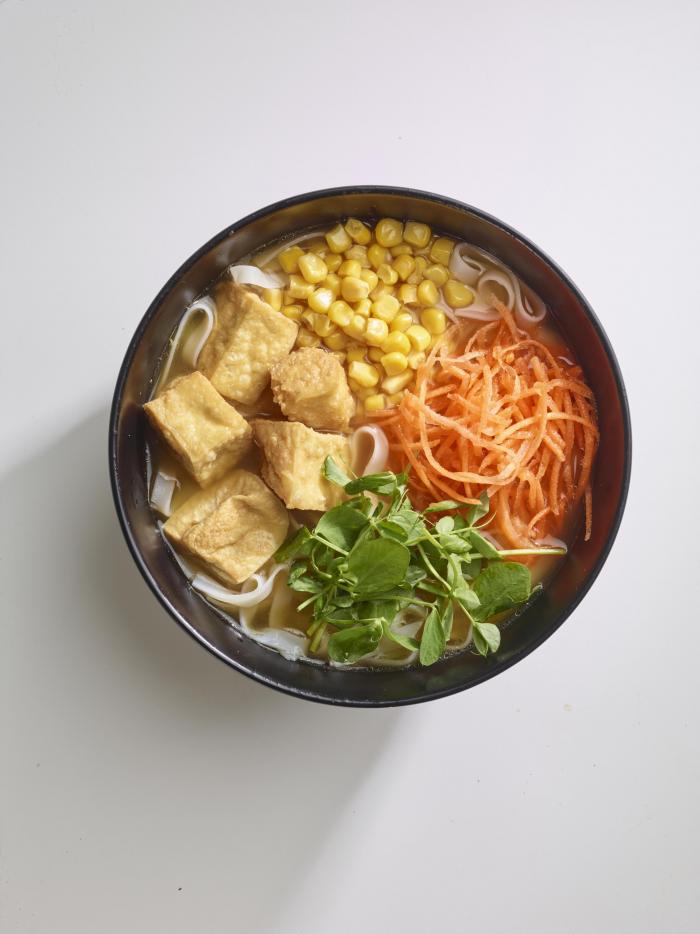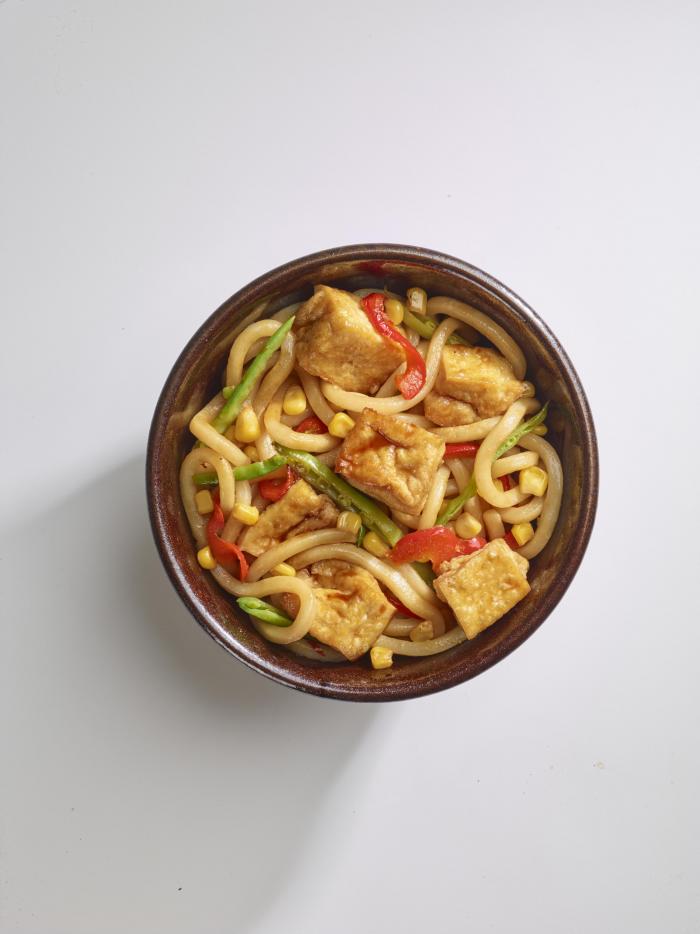Specialist Paediatric Nutritionist, Bahee van de Bor, has worked with wagamama to create a list of the top thirty vegan foods that kids should try before they are 12, to celebrate the launch of its new plant-based kids menu. Here, she gives The Lady some advice on encouraging kids to eat healthily and try new things.
My six-year-old removes vegetables from his plate – what do you advise?
Try digging a little bit deeper. Finding out exactly what is it about the vegetables that your child doesn’t enjoy. It could be the smell, texture or appearance, it can help to present the vegetables to mirror another food that they enjoy. If your child loves chips for example, then try giving them other vegetables in a similar form, like carrot chips. At wagamama, one of the vegan kids options is the mini yasai katsu curry which has breaded sweet potato and butternut squash chips. This helps children feel confident when it comes to trying foods that are not a favourite. You could also offer a sauce to dip the carrots into or grate them into a stir-fried dish.
Also, try and find something that the six-year-old can relate to so that there’s meaning in why vegetables are important. For example, eating vegetables might help them grow as tall as their daddy or help them run as fast as their friends at school.
For children that are used to unadventurous foods, how do you suggest the transition to this kind of healthy dish goes smoothly?
For slightly older children, try involving them, look through recipe books together, pick recipes to make, then shop and cook before eating as a family. When eating out, encourage them to pick their own meal, but choose a restaurant that you know offers a nutritious kids menu. In fact, it’s a great time for kids to try something different, like vegan options and tofu – because it may not be something you’re used to cooking at home.
For younger children, try introducing new foods through play. This is an excellent way of introducing new foods. Food-based messy play using toy kitchens, utensils and their favourite dolls, cars and figurines is a gentle way to help break the ice. You can also try the same food up to twelve days in a row before they will try new food. Consistency and repetition are key.
What tips do you have to get kids to try something new?
Children love to be involved in the decision-making process. I often encourage parents to give children a choice. For example, ask your child “would you like carrots and peas for dinner or carrots and tomatoes?” This way parents maintain overall responsibility for providing nutritious family meals without being bullied into succumbing to smiley chips or something that wasn’t initially planned on the menu. A new initiative that wagamama has introduced is the tofu challenge, where children dining are invited to try a piece of tofu in vegetable stock for free! It’s a great way to encourage them to try something new.
Can children receive all their nutrients through only a vegan diet?
I worked with wagamama to create the list of the top thirty vegan foods kids should try before they are 12, to celebrate the launch of its new plant-based kids menu, and it was really important to showcase the range of foods that are important to eat. Vegan diets require careful planning to ensure that all of the major nutrients are met, particularly for children. Some micronutrients such as vitamin B12, iodine and some types of omega-3 fats like DHA will need to be supplemented. Although calcium and iron can be met through plant foods, as the absorption rates from plant sources can vary, it’s important to speak to a paediatric dietitian to make sure that children meet their requirements for these important nutrients at every meal.
Is dairy bad for you?
Dairy isn’t bad for you. It’s a useful source of protein, B vitamins, iodine and calcium. If animal welfare is important to you and you prefer not to give up milk, then choose organic cow’s milk. If you choose to give up dairy altogether, then choose a plant drink that is preferably fortified in calcium, vitamin B12 and iodine. Note that organic brands may not be fortified so it’s really important to read food labels.
wagamama top 30 things to try before you’re 12
- Tofu - For protection against heart disease and also help reduce bone loss
- Edamame - Useful snack for kids as an additional way to sneak in protein into children’s diets
- Sesame seeds - Contribute iron and zinc but also a range of vitamins and minerals
- Peanuts - Rich in antioxidants and a good source of zinc
- Guava – High in Vitamin C which is an immune booster and protects from infection, such as the regular coughs and colds
- Banana - The prebiotic fibre in bananas help the growth of friendly “good” bacteria in the gut to help maintain a healthy digestive system
- Broccoli - At least 50% of calcium present in broccoli is absorbed by the body. A nutritious vegetable with multiple vitamins
- Spinach – High in iron, which is important for transporting oxygen around the body
- Sweet potato - Rich in beta-carotene, a vitamin important for immunity and vision
- Red split lentils – Rich in iron and a great source of fibre
- All beans: chickpeas, butter beans, haricot, adzuki - Excellent source of plant protein and carbohydrate with soluble fibre - supporting a healthy central nervous system and children’s learning capacity
- Soba Noodles - High in fibre and also higher in protein compared to standard wheat based noodles
- Beets - Nitrates in beets are thought to help promote cognitive function
- Carrots - Rich in vitamin A, fat-soluble vitamin that children require for vision, immunity as well as normal growth and development
- Amaranth - High protein grain that is complete with all essential amino acids and antioxidants
- Oats - Contains beta-glucan fibre which helps prevent constipation
- Blueberries - Overall beneficial for heart health, brain function, low in calories and anti-inflammatory properties
- Mango - High vitamin A content making it a great food source for immunity, healthy hair and skin
- Walnuts - Perfect ratio of the essential omega-3 fats to help the body make DHA that has an important role in brain development
- Almonds - One of the best sources of vitamin E foods (23.9mg/100g) but is also rich in iron
- Apple - Most of the fibre and antioxidants are on the skin, so encourage kids to eat with the skin left on
- Passion fruit - Vitamin A is important for immunity, vision and healthy skin
- Mushrooms - An affordable source of selenium with a “meaty” texture
- Bell peppers - The vitamin C in bell peppers also helps the absorption of iron from plant foods
- Artichoke - An excellent source of fibre that help feed the healthy bacteria in the gut
- Kale - The calcium in kale is highly bioavailable with at least 50-60% is absorbed
- Butternut squash - A nutritious food for kids that is high in both vitamin A and is a source of vitamin E and potassium
- Aubergine - especially rich in anthocyanins, a type of pigment with antioxidant properties that's responsible for their vibrant colour
- Rapeseed oil - Rich in poly and mono fats, it is also a source of parent omega-3 fats which the body can convert to a small extent to DHA (DHA has a role in the normal development of the brain and eyes)
- Calcium fortified plant drink - Children following a plant-based diet require a reliable source of calcium such as soy or oat-based calcium enriched drink
Photo credit: Lauren Jayne Hall











